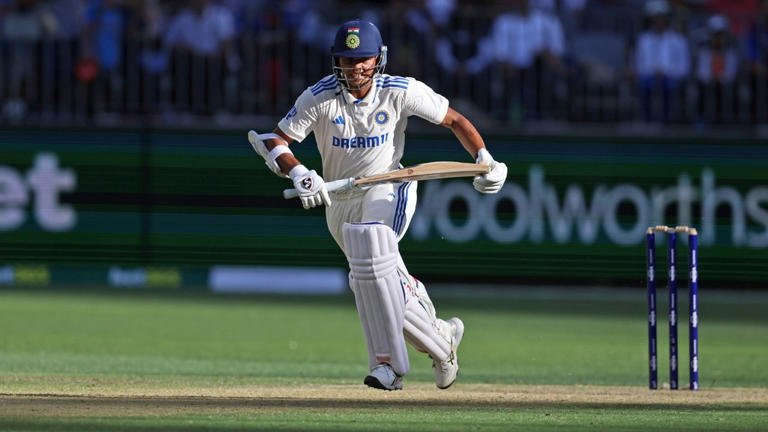Mastering Cricketing Feet: The Key to an Effective Batting Technique

Introduction to Cricketing Feet
Cricketing feet refer to the fundamental movements and positioning of a player’s feet during batting. This essential aspect of the game plays a crucial role in determining not only a player’s effectiveness at the crease but also their overall performance throughout an innings. Mastering cricketing feet is integral to executing various shots with precision, as it influences balance, timing, and weight transfer while playing against different types of deliveries.
Footwork can significantly alter the outcome of a shot, making it imperative for players to develop the right techniques. The ability to move swiftly and accurately to the ball allows batsmen to maintain optimal positioning, thereby increasing their chances of making successful contact with the cricket ball. Poor footwork, on the other hand, can result in mistimed shots or missed opportunities, often leading to dismissals. Consequently, an emphasis on foot positioning and movement becomes critical in training and match scenarios.
The basics of cricketing feet involve understanding how to align oneself with the incoming ball. This alignment begins with a stable base, where players should adopt a comfortable stance that allows for quick adjustments. Proper footwear and grip can enhance agility, enabling batsmen to execute quick steps towards or away from the pitch. Additionally, practicing footwork drills enhances muscle memory, allowing for instinctive movements that can be invaluable in competitive situations.
In conclusion, the mastery of cricketing feet forms the cornerstone of an effective batting technique. Footwork is not merely an ancillary skill; instead, it is a foundational element that must be developed to achieve success on the cricket field. Fostering a deep understanding of how to position and move one’s feet when playing various shots will help players capitalize on scoring opportunities and mitigate risks of failure.
The Importance of Footwork in Cricket
Footwork is a fundamental aspect of cricket that often determines a player’s success at the crease. Understanding the significance of effective foot movement can immensely improve a batsman’s performance by enabling precise shot selection, enhancing balance, and ensuring optimal timing. When players possess proficient cricketing feet, they can quickly adjust their stance and positioning to accommodate various deliveries, thus allowing themselves to execute shots with confidence and accuracy.
The rhythm and timing associated with good footwork make it easier to transfer weight and generate power during shots. For instance, an opener facing fast bowlers must adeptly maneuver their feet to either step back in defense or advance onto the front foot to drive, thereby maximizing their chances of solid shot execution. Well-coordinated movements not only facilitate better angles for hitting the ball but also contribute to a stable batting posture, which is essential for maintaining focus and readability of the bowler’s actions.
Conversely, suboptimal foot movements can have dire repercussions. Batters who fail to align their body properly with the ball may find themselves out of position, resulting in mistimed shots that often lead to dismissals. Poor footwork can lead to top edges, caught behind attempts, or even clean bowls, thus transforming a seemingly effortless innings into a frustrating outing. This highlights the necessity for cricketers to continuously practice and hone their footwork, as each step taken has the potential to influence their overall performance on the field significantly.
Ultimately, mastering the intricacies of cricketing feet not only aids in shot execution but is also a critical factor in maintaining composure under pressure, thereby underpinning a batsman’s capacity to capitalize on scoring opportunities.
Types of Footwork Techniques
Footwork in cricket is a crucial aspect that significantly impacts a player’s batting performance. Mastery of various footwork techniques allows batsmen to adapt to different bowling styles and maintain control over their shots. Here, we will examine several essential footwork techniques, including the forward press, back foot play, and lateral movement, each with specific situational applications.
The forward press is a technique where the batsman steps towards the bowler, transferring weight onto the front foot. This method is particularly effective against fast bowlers, allowing the batsman to close the gap between themselves and the ball, thus enhancing shot execution. For instance, when facing a short-pitched delivery, the forward press can help a batsman play a confident front foot drive, exploiting the gap between cover and mid-off.
On the other hand, the back foot play involves shifting weight onto the back foot, which is ideal for dealing with short-pitched or rising deliveries. This technique allows the batsman to manipulate the ball better and play shots such as the pull or the cut. An example is when facing a fast bowler who bowls a bouncer; the batsman can pivot onto the back foot swiftly, positioning themselves to execute a powerful pull shot.
Lateral movement is another vital technique that enhances a batsman’s ability to respond to various deliveries. Moving side-to-side enables the batsman to get into the best position for their shot, especially when facing bowlers with variations in pace and spin. For example, a batsman may utilize lateral movement to counter a bowler delivering a wide ball, ultimately aiming to generate an elegant square cut or an off-side drive.
Overall, effective cricketing feet techniques are indispensable for cricketers striving for success at the crease. Each method offers a unique advantage tailored to specific situations, enhancing a player’s adaptability and precision on the field. Understanding and practicing these footwork techniques are foundational for any aspiring batsman.
Drills to Improve Cricketing Feet
Enhancing cricketing feet is pivotal for achieving an effective batting technique. Footwork plays a crucial role in determining a batsman’s ability to respond to varying pitches and deliveries. Integrating specific drills into practice sessions can significantly elevate a player’s agility, speed, and precision. One of the most beneficial exercises is shadow practice. This involves a player mimicking foot movements without a ball, enabling them to focus on achieving the right stance, balance, and shifting weight effectively. By practicing these movements repetitively, batsmen develop muscle memory, allowing them to anticipate and react quickly during actual gameplay.
Another effective drill is the cone drill, which utilizes cones set up in various patterns. This exercise encourages players to engage in quick lateral movements while maintaining a low center of gravity. By navigating around the cones, batsmen enhance their footwork coordination, enabling quicker responses to oncoming deliveries. Moreover, incorporating partner drills, such as hitting a ball fed by a teammate while focusing on foot placement, can refine both batting technique and foot movement. This not only reinforces the necessity of positioning but also instills the importance of maintaining a strong batting base while moving into the right positions.
Ultimately, consistency and dedication are paramount when mastering cricketing feet. Repeatedly practicing these drills allows players to identify their footwork weaknesses and address them effectively. Incorporating variations in speed and intensity in these drills can also simulate real match conditions, better preparing players for the dynamics of actual game scenarios. By continually focusing on these exercises, any batsman can take their footwork to the next level and improve their overall batting performance.
Common Mistakes in Cricketing Feet
Effective footwork is a critical aspect of a proficient batting technique in cricket. However, many players, regardless of their experience level, often make common mistakes with their cricketing feet that can significantly impede their performance. One frequent error is improper weight distribution. Many players tend to lean back, shifting their weight onto their back foot instead of maintaining a balanced stance. This can lead to a lack of power and control, reducing the player’s ability to attack the ball effectively.
Another prevalent mistake involves insufficient movement during the delivery of the ball. Players who are static, not adjusting their feet appropriately in response to the pitch, often miss out on making solid contact. This lack of mobility may result in mis-timed shots or, worse, getting dismissed due to a simple delivery. Consistent foot movement enables players to get into the optimal position, ensuring better shot execution and increased accuracy in placement.
Additionally, failing to adjust foot placement can lead to misreading the bowler’s intentions. Many players adopt a rigid approach, sticking to a default foot position regardless of the type of delivery. This can result in being caught off guard by variations in the bowler’s line and length. It is essential for players to develop an acute awareness of the game and adjust their position quickly based on the bowler’s actions.
To avoid or correct these pitfalls, players can practice drills that emphasize dynamic movements and weight shifts. For instance, using cones to enhance lateral footwork can help improve agility and responsiveness. Regular feedback from coaches and self-analysis through video replays can also be beneficial, allowing players to recognize their mistakes and refine their techniques accordingly. Addressing these common footwork issues will lead to improved performance and a more solid batting foundation.
Footwork for Different Formats of Cricket
Footwork remains a pivotal aspect of batting technique across all formats of cricket, yet the strategies employed often vary significantly between Test matches, One Day Internationals (ODIs), and Twenty20 (T20) formats. Each format presents unique demands that influence players’ approach to their cricketing feet. Understanding these nuances is essential for maximizing performance.
In Test cricket, the focus is primarily on building an innings over an extended duration. As such, players often adopt a more defensive stance, allowing for the conditions to dictate their footwork. A solid foundation is critical; the batsman typically needs to play with patience and precision. They may utilize a more pronounced forward or backward movement depending on the type of delivery, anchoring their stance to allow for better balance and weight transfer. This measured foot movement enables players to defend proficiently against both pace and spin bowlers, ensuring they can withstand prolonged periods of pressure.
ODIs, conversely, necessitate a more aggressive and calculated approach. Given the limited overs, batsmen are encouraged to score runs at a brisk pace while maintaining their wicket. This urgency translates into quicker foot movements, as players often use their cricketing feet to adjust swiftly to both singles and boundary opportunities. The ability to use lateral footwork effectively allows them to adapt to variations in bowler lengths, facilitating optimal shot selection, which is paramount in this format.
In T20 cricket, the dynamic nature of the game calls for rapid adjustments. Batsmen employ explosive footwork to access all areas of the field quickly. The use of quick steps is essential for converting singles into twos or creating space for powerful shots. Players often rely on innovative foot movements to exploit gaps and minimize dot balls. This fast-paced technique is integral to maximizing scoring potential, especially in high-pressure situations, showcasing the adaptability of a batsman’s cricketing feet across formats.
The Role of Footwork in Fielding and Bowling
Footwork plays a crucial role in the game of cricket, influencing not only batting techniques but also the effectiveness of fielding and bowling. While many players focus on the batting component of cricketing feet, it is essential to recognize that fielders and bowlers equally rely on agile footwork to excel in their respective roles.
In the context of fielding, efficient footwork enables fielders to position themselves optimally, ensuring they can react swiftly to the ball’s trajectory. When fielders are adept at moving their feet quickly and effectively, they enhance their chances of stopping runs and executing catches. Proper foot placement allows them to achieve a balanced stance, which is vital when preparing to catch or halt the ball. Additionally, ball-handling becomes more reliable when fielders have the ability to adjust their bodies and feet to the play’s demands, ultimately reducing the likelihood of errors during crucial moments.
Bowling, on the other hand, requires precise footwork to ensure consistent delivery. Bowlers must develop a solid foundation through their cricketing feet, as it impacts their momentum, balance, and ability to deliver the ball accurately. Each bowler employs a unique footwork technique based on their style, whether it be seam, spin, or pace. By mastering foot placement and movement, bowlers can enhance their control over the ball’s release point and trajectory, thereby improving their effectiveness on the field. Adjustments to foot positioning create varying angles and speeds, putting more pressure on the batsman.
In conclusion, footwork is a critical aspect of cricket that should not be underestimated. Both fielders and bowlers benefit significantly from honing their cricketing feet skills, leading to improved performance and increased chances of success. Emphasizing footwork training can yield substantial results on the field, impacting the overall quality of play in cricket.
Incorporating Footwork into Daily Training Regimens
Effective footwork is crucial for any cricketer looking to enhance their batting skills. Incorporating cricketing feet drills into daily training regimens can significantly improve a player’s agility, balance, and overall batting technique. To begin, warming up with footwork-specific exercises is vital. Such exercises may include ladder drills, cone sprints, and lateral shuffles, which help develop quick movements and coordination.
After a thorough warm-up, cricketers should consider setting specific goals for their footwork training. Identifying personal areas for improvement, whether it be lateral movement speed or the ability to get into position quickly for various types of deliveries, can provide direction for practice sessions. Athletes may also incorporate variations in their training, such as practicing against a bowling machine or using a partner to simulate real-match scenarios. This fosters adaptability, enhancing their readiness to face different bowling styles during actual matches.
Furthermore, tracking progress over time is crucial for continuous improvement. Players can maintain a training journal, noting down their daily footwork exercises, the difficulty level of the drills, and their perceived performance during each session. This record serves not only as a motivational tool but also helps identify patterns in performance related to various techniques and outcomes. As improvements are made, cricketers can gradually increase the complexity of their drills, adapting them to match their developing skills.
In summary, integrating footwork drills into regular training regimens is essential for mastering cricketing feet. By focusing on warm-up routines, setting clear goals, and tracking their progress, players can ensure that their footwork becomes a fundamental part of their success on the cricket field.
Conclusion: The Future of Cricketing Feet
In cricket, the mastery of cricketing feet is an essential component that directly influences a batter’s success at the crease. As the game of cricket continues to evolve, so too do the techniques and methodologies employed to optimize footwork. The importance of proper foot placement, timing, and balance cannot be understated, as these elements combine to form the foundation of a strong batting performance. Coaches and players alike are now acutely aware of the benefits that can be derived from focusing on footwork drills and exercises.
The current trend is toward a more systematic approach to developing cricketing feet, with a greater emphasis on agility and coordination training. Modern players are utilizing advanced training methods that incorporate technology and biomechanics to analyze their footwork. This enables them to identify areas for improvement and adopt more effective practices. As cricket continues to be played at an increasingly competitive level, it is imperative that players adapt their footwork techniques to keep pace with the demands of the game.
At all levels of play, from grassroots to professional, aspiring cricketers should prioritize developing their footwork skills. This involves dedicated practice that hones not only the technical aspects of foot placement but also the mental components such as decision-making under pressure. By placing cricketing feet at the forefront of their training, players will significantly enhance their ability to read the game, position themselves effectively, and execute shots with precision.
Ultimately, the future of cricketing feet looks promising, shaped by innovation and a commitment to improvement. By embracing a proactive approach to footwork, today’s players can set themselves up for sustained success on the field, ensuring that their cricketing journey is both fulfilling and rewarding.
You may also read this softgrid.



